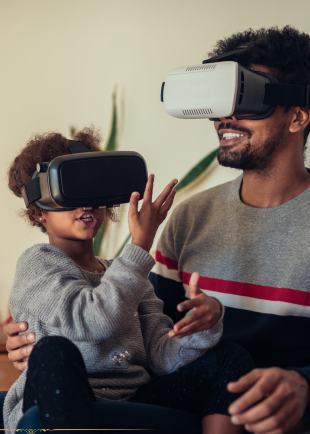Discover how Virtual Reality Therapy is revolutionizing mental health care by offering immersive, effective, and accessible treatments for anxiety, PTSD, phobias, and more.
Mental health care is evolving with the rapid integration of immersive technologies, and virtual reality (VR) therapy stands out as one of the most promising innovations. By simulating controlled, realistic environments, VR therapy offers patients a powerful tool for confronting and managing psychological challenges. From treating anxiety to post-traumatic stress disorder (PTSD), VR is opening new doors to more engaging, effective, and accessible mental health solutions.
Providing Safe and Controlled Exposure Therapy
One of the most effective uses of VR therapy lies in exposure therapy—particularly for conditions like PTSD, phobias, and social anxiety. Traditionally, therapists guide patients through imagined or real-world exposure to triggers, which can be difficult to recreate safely or consistently. VR therapy allows patients to confront fears in a controlled, repeatable virtual environment. Whether it's flying in an airplane, speaking to a crowd, or recalling traumatic war experiences, VR helps individuals face their fears gradually and safely, without physical risk.
Enhancing Engagement in Cognitive Behavioral Therapy (CBT)
Cognitive Behavioral Therapy is a proven technique for reshaping negative thinking patterns and behaviors. VR elevates the effectiveness of CBT by creating immersive environments where patients can interact with scenarios that simulate their challenges. This makes sessions more engaging and tailored, allowing therapists to observe reactions in real-time and offer immediate guidance. The immersive aspect of VR boosts emotional involvement, leading to deeper insights and stronger therapeutic outcomes.
Supporting Meditation, Mindfulness, and Stress Reduction
For individuals dealing with generalized anxiety or stress, VR offers guided meditation sessions and mindfulness experiences in calming, natural settings. Users can find themselves on a serene beach, in a peaceful forest, or floating among the stars, all while listening to therapeutic voiceovers. This immersive relaxation environment helps in reducing cortisol levels, improving focus, and encouraging positive mental habits. Unlike audio-based meditation apps, VR provides visual and sensory reinforcement, deepening the impact of stress-reduction techniques.
Enabling Therapy Access in Remote and Underserved Regions
One of the greatest challenges in mental health care is accessibility, especially in rural or underserved regions. VR therapy, paired with telehealth platforms, enables remote consultations that are just as immersive and impactful as in-person sessions. Patients can wear VR headsets from their homes and participate in guided therapeutic environments monitored by licensed professionals. This flexibility allows broader outreach, especially in areas where mental health services are limited or stigmatized.
Empowering Youth and Adolescents with Interactive Solutions
Children and teenagers are often more receptive to interactive and gamified formats. VR therapy makes mental health treatment more appealing and less intimidating to younger audiences. With playful avatars, storytelling, and visual feedback, therapists can engage adolescents in social skills training, anger management, or emotional regulation. This generation’s familiarity with technology makes VR an ideal medium to build rapport and sustain interest throughout the therapeutic journey.
Virtual Reality Therapy is not just a futuristic concept—it is a current, practical tool that is redefining how mental health services are delivered and experienced. By creating immersive, responsive environments, VR helps patients engage more deeply, confront challenges more safely, and find healing more effectively. As this technology becomes more affordable and widespread, it holds the promise of making quality mental health care more engaging and universally accessible.
Embracing the Future: Where VR Therapy is Headed
The future of virtual reality therapy is incredibly promising. As VR hardware becomes more affordable and mobile, we can expect more at-home therapeutic solutions that don’t rely on clinic visits. Personalized VR therapy programs, driven by AI and data analytics, are likely to emerge—adapting each session in real time based on the user’s mood, responses, and biometrics such as heart rate or gaze tracking. With 5G connectivity, real-time therapist supervision of immersive sessions will become seamless, making therapy more dynamic, responsive, and customized.
Emerging technologies like haptic feedback, eye-tracking, and even scent simulation will further deepen immersion. This level of sensory involvement will enhance the emotional realism of sessions, making therapy more impactful for individuals who previously struggled with traditional models.
Addressing the Challenges of VR Therapy
Despite its benefits, VR therapy is not without limitations. High initial costs of hardware and software development can be a barrier, especially in lower-income or government-funded health systems. Additionally, not all mental health conditions may respond equally well to VR-based approaches. Some individuals might feel disoriented, overstimulated, or disconnected by the virtual nature of treatment.
Moreover, there is a learning curve for both therapists and patients in using the technology effectively. Ensuring therapists receive proper training and that VR programs are ethically designed with diverse populations in mind remains critical to inclusive and safe application.
Clinical Acceptance and Research Validation
The medical and psychological community is gradually recognizing VR as a valid therapeutic tool. Several clinical trials have shown strong evidence of VR's efficacy in treating PTSD, anxiety disorders, phobias, and stress-related conditions. Regulatory bodies across countries are also beginning to establish guidelines for digital therapeutics, and insurance providers are starting to evaluate coverage for VR-based sessions.
However, for VR therapy to gain widespread clinical adoption, continued research, standardization, and longitudinal studies are essential. Demonstrating long-term benefits, especially in comparison to traditional therapy, will be the key to building credibility among skeptics.
Adopting the Next-Gen Approach to Mental Wellness
As the lines between technology and therapy blur, one thing is clear—virtual reality is no longer a novelty, but a necessity in the evolving mental health ecosystem. Whether you're a healthcare provider, a therapist, or someone seeking a more engaging path to healing, now is the time to explore what VR therapy can offer.
Investing in or partnering with VR therapy providers, training clinicians in immersive treatment protocols, and increasing awareness among patients are practical steps toward integrating this powerful tool into mainstream care. The journey to mental wellness is personal—and VR gives us a new lens through which that journey can be reimagined.











